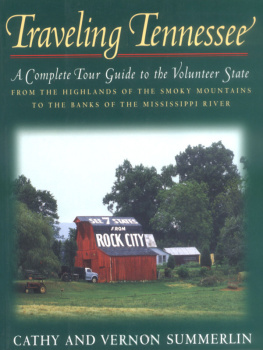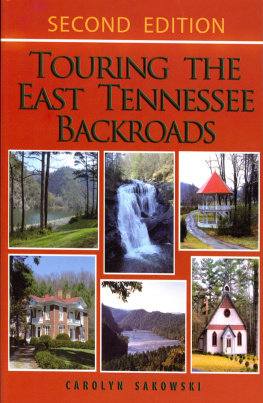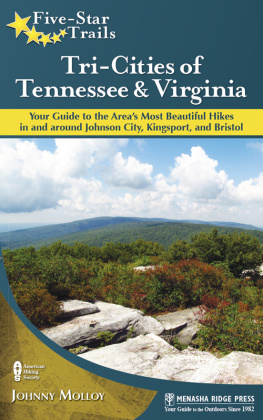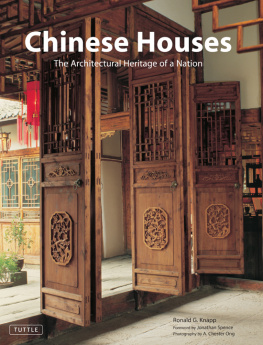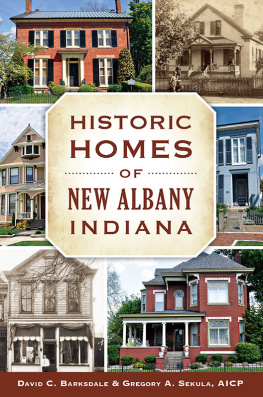
IMAGES
of America
HISTORIC HOMES OF
NORTHEAST TENNESSEE

WILLS STONE HOUSE. A number of stone houses were built in Northeast Tennessee during the late 18th and early 19th centuries. The Wills-Dickey House was constructed of cut stone along the North Fork Holston River in the Carters Valley community of Sullivan County. It was built about 1790 by Jacob and Mary Wills. (Courtesy of the City of Kingsport Archives.)
ON THE COVER: CHRISTOPHER TAYLOR HOUSE: Taken prior to the 1930s, this photograph of the Christopher Taylor House was made decades before the structure was relocated to downtown Jonesborough. It was built during the late 18th century just outside of town. Andrew Jackson lived at the house before he was elected president. The home was moved to Main Street in 1974. (Courtesy of the Tennessee State Library and Archives.)
IMAGES
of America
HISTORIC HOMES OF
NORTHEAST TENNESSEE
Robert Sorrell

Copyright 2016 by Robert Sorrell
ISBN 978-1-4671-1707-4
Ebook ISBN 9781439657287
Published by Arcadia Publishing
Charleston, South Carolina
Library of Congress Control Number: 2016930621
For all general information, please contact Arcadia Publishing:
Telephone 843-853-2070
Fax 843-853-0044
E-mail
For customer service and orders:
Toll-Free 1-888-313-2665
Visit us on the Internet at www.arcadiapublishing.com
For my family and friends, who have supported me during this project
CONTENTS
ACKNOWLEDGMENTS
This book would not have been possible without the extraordinary help from the outstanding people of Northeast Tennessee. First of all, I would like to thank my family and friends, who have supported me throughout this project.
I would also like to thank the many archivists, historians, and residents who call the region home. I want to thank the wonderful staffs at the City of Kingsport Archives, Archives of Appalachia, Milligan College, Tusculum College, the Bristol Historical Association, Rogersville Heritage Association, Rocky Mount Historical Association, Tipton-Haynes State Historic Site, Tennessee State Library and Archives, Tennessee Historical Commission, National Register of Historic Places, the Greeneville Greene County History Museum, and the Heritage Alliance of Jonesborough. I also want to thank the many individuals who helped me along the way, including Callie Ruble, Patrick Stern, Brenda Dodson, Patsy Green, Robert White III, Doug Ledbetter, Scott Bowers, Tom Vaughan, Elizabeth Smith, Kathy Serago, Mary Ann Hager, and Connie Landreth.
INTRODUCTION
Welcome to Northeast Tennessee, a region of quiet, charming communities and bustling urban centers, nestled in the foothills of the southern Appalachian Mountains. This is a guidebook to these communities, with particular interest in the historic homes that make up the urban and rural landscape.
Readers may be surprised by the homes featured within this book, showcasing an array of residences, some up to 300 years old. While many are simple, smaller residences, others are magnificent mansions and estates. This book is not prejudiced to one type of home. There are mansions, log cabins, urban row houses, apartment complexes, and homes of brick, stone, and wood. There are some homes with just one room and some with 20 to 30 rooms. There are some homes that welcome visitors with art, history, and brilliant architecture, and others are hidden away, tucked behind private fences and old trees.
The oldest homes in this book were built during the early days of Tennessee settlement, in the mid- to late 1700s. Colonists from the East Coast had begun settling west of the Appalachian Mountains, primarily along the Holston, Nolichucky, and Watauga Rivers.
In 1772, settlers along the Watauga River developed the Watauga Association, which is considered by historians to be the first constitutional government in North America, in present-day Elizabethton. A few homes and a fort were constructed.
The people living in Northeast Tennessee were violating British law, which prohibited colonists from settling west of the Appalachian Mountains. In 1775, the Watauga Association reorganized as the Washington District, as the colonies headed for war against the British government. During the Revolutionary War, a number of men from Tennessee and Virginia crossed the mountains to fight at Kings Mountain, South Carolina, which was a definitive American victory.
One of the early Watauga settlers, John Carter, and his son Landon Carter built a home about 1780. The Carter Mansion, which is considered to be the oldest frame home in the state of Tennessee, has been completely restored and is now part of Sycamore Shoals State Historic Area. Sabine Hill, another early Watauga settlement home, is also owned by the state. Historians and architects have restored the home to its heyday, when Gen. Nathaniel Taylor constructed the home in the early 1800s.
Another early settler, George Gillespie, contracted stonemason Seth Smith in 1792 to build a sturdy, fort-like home along Big Limestone Creek in Washington County, near the Nolichucky River. Smith designed and built a number of houses in present-day Greene and Washington Counties. Gillespies home is an immaculate and imposing structure, built of locally procured stone. Like many homes in the region, Gillespies house is listed in the National Register of Historic Places.
After the Revolutionary War and American independence, area residents were practically abandoned by North Carolina, which claimed the land west of the mountains. Residents created the state of Franklin in 1784 and sought official recognition. They used the name Franklin to honor Benjamin Franklin. The unofficial state lasted for about five years, before the area became known as the Southwest Territory.
Pres. George Washington appointed William Blount as territorial governor. Blount and his family regularly visited the home of the Cobbs in present-day Piney Flats. The house, now the site of the Rocky Mount State Historic Site, was constructed sometime between 1770 and 1772.
In 1796, Congress approved the admission of Tennessee as the 16th state of the Union. The borders were drawn by extending the northern and southern borders of North Carolina to the Mississippi River. A few towns in Northeast Tennessee had already begun to grow by the time the state was founded, including Greeneville, Jonesborough, and Rogersville. By the time the Civil War began in 1861, a number of homes had been built in the region.
Pres. Andrew Johnson lived in Greeneville. His homes now comprise the Andrew Johnson National Historic Site. There were also many Confederate supporters in the region. In many cases, neighbors, family members, business partners, and friends, supported differing sides. For example, Maj. Henderson Folsom fought for the Confederacy. He lived in a large home on present-day Elk Avenue in Elizabethton. His neighbor, Samuel P. Carter, who lived across the street in another large colonial home, fought for the Union. A number of battles were fought in the region during the war, including at Blountville, Limestone, and Blue Springs. Many homes still standing today in the region were used as military hospitals and headquarters for Union or Confederate armies.
After the war, the area saw growth with the development of the railroad. Agricultural enterprises flourished and industry developed throughout the rest of the 19th and early 20th centuries. Farming has always been one of the most important industries in the region, and a number of families have thrived in rural Northeast Tennessee.
Next page


